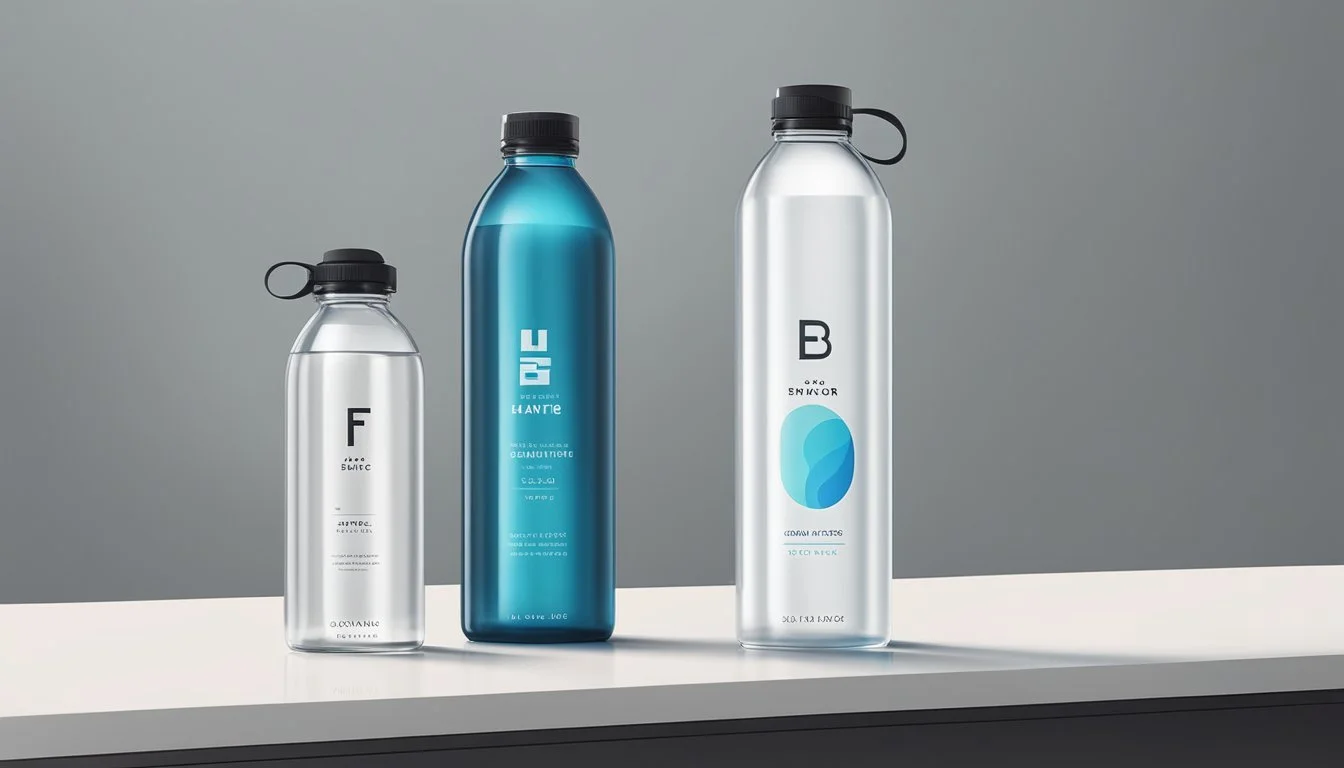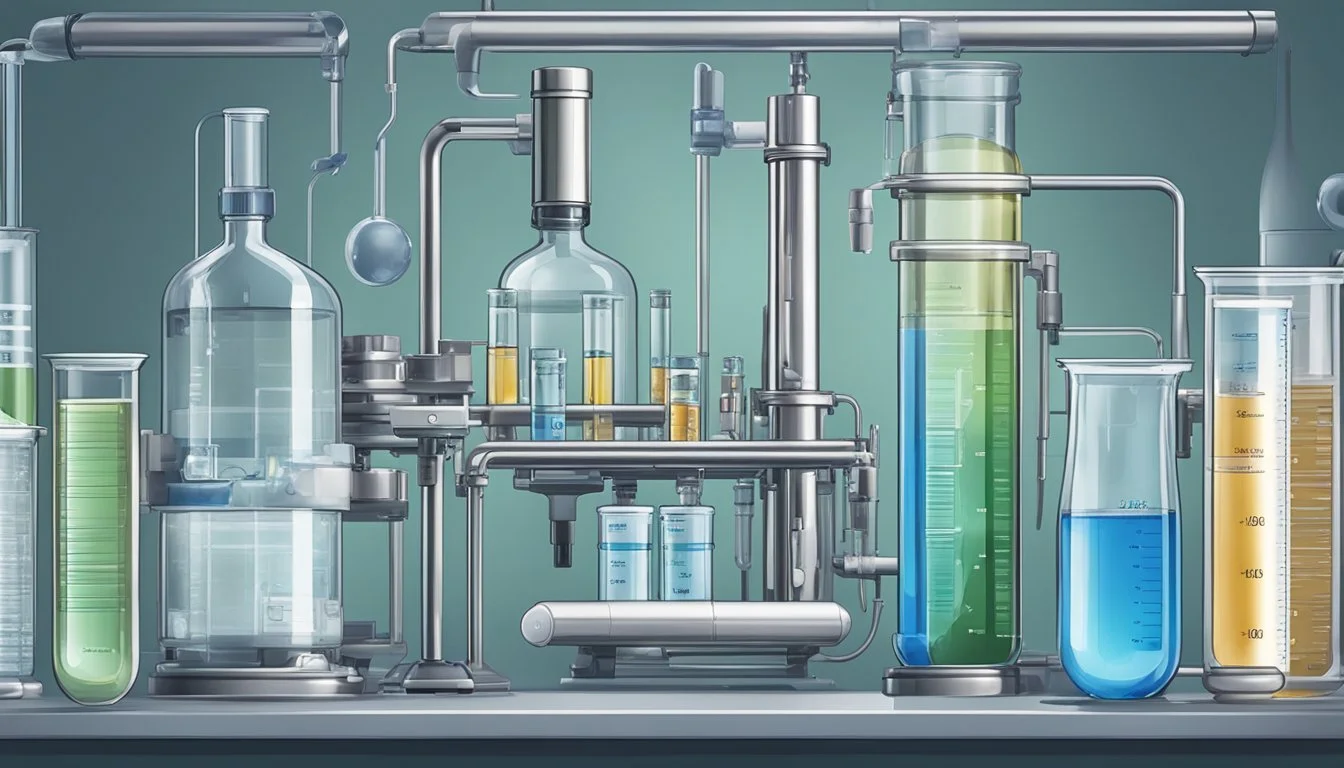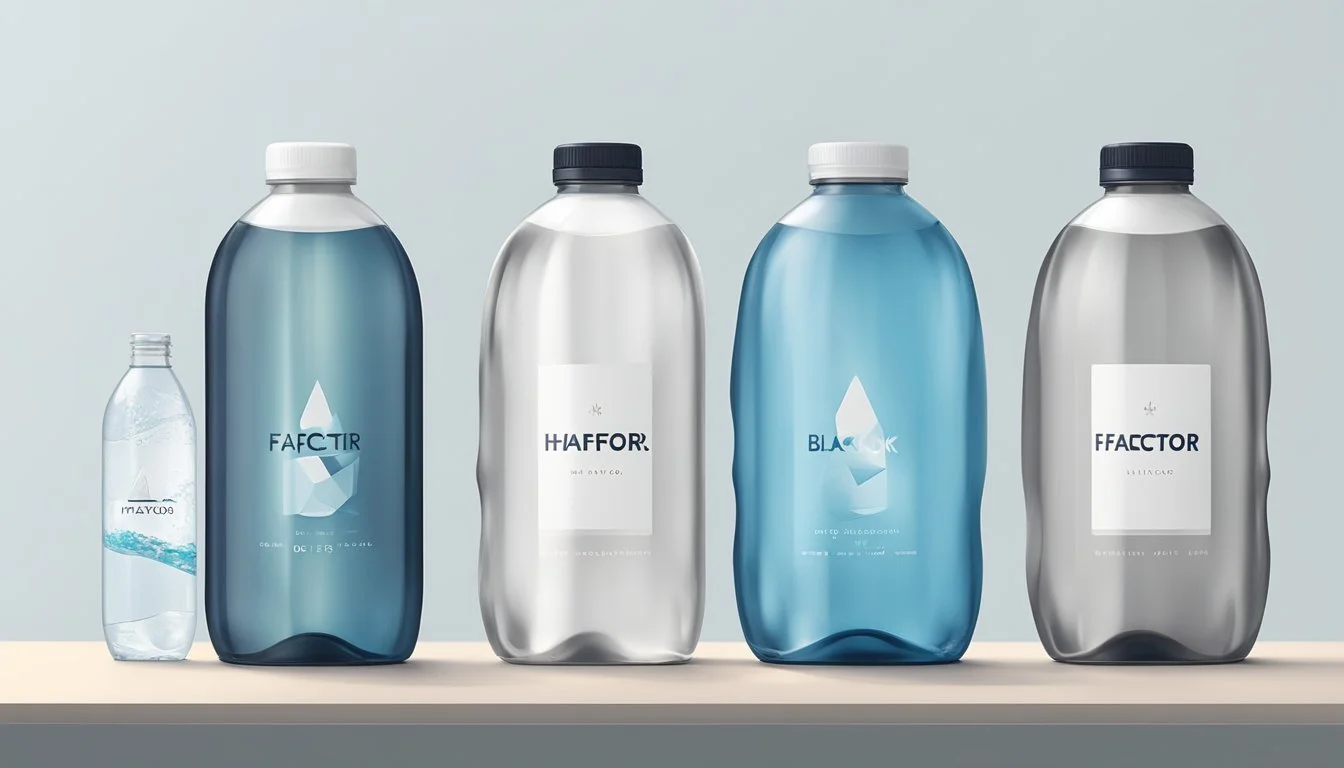HFactor vs. Blk
Comparing Bottled Water Quality and Benefits
When it comes to choosing the right bottled water, discerning consumers often debate between HFactor and Blk. Each brand offers unique qualities that set them apart in the crowded bottled water market. HFactor is celebrated for its hydrogen-infused water, touted for its potential antioxidant properties, making it a favorite among health enthusiasts.
On the other hand, Blk stands out with its striking black hue, resulting from the addition of fulvic trace minerals, which claim to enhance hydration and nutrient absorption. This makes Blk not just a refreshing drink but also a conversation starter.
In deciding which is better, it comes down to personal preference and health goals. For those seeking a functional beverage that may offer health benefits beyond hydration, HFactor might be the superior choice. However, if you're looking for a unique, mineral-rich water, Blk's distinct appearance and mineral content may win you over.
Understanding Bottled Water
Bottled water comes in various types, each offering unique properties and benefits. These types include spring water, mineral water, purified water, and natural water.
Spring Water is sourced from natural springs. It is typically rich in minerals and comes directly from underground sources. The purity of spring water is maintained by minimal processing.
Mineral Water contains dissolved minerals and electrolytes. This type of water is known for its health benefits and unique taste. The minerals are either naturally present or added during bottling.
Purified Water is processed to remove impurities and contaminants. Methods such as distillation, reverse osmosis, or carbon filtration are commonly used. This results in high-quality drinking water, often free from chemicals and contaminants.
Hydration is a key benefit of bottled water. Many brands market their water as an excellent source of hydration. The convenience of bottled water makes it a popular choice for consumers on the go.
Electrolytes are vital for maintaining body function, especially during physical activities. Some bottled water brands add electrolytes to their water, boosting its effectiveness in rehydrating the body.
Mineral Content in bottled waters varies significantly. Some brands emphasize high mineral content, catering to consumers looking for added health benefits, while others aim for a more neutral taste profile.
Natural Water is sourced from protected natural sources and is bottled with minimal processing. This type of water is appreciated for retaining its natural mineral content and taste.
Bottled water provides an option for safe, clean drinking water, meeting diverse needs such as convenience, taste preference, and specific mineral composition.
Type Description Spring Water Natural source, rich in minerals Mineral Water Contains minerals, beneficial Purified Water Processed, contaminant-free Natural Water Minimal processing, natural taste
Assessing Water Quality and Safety
Water quality and safety are essential considerations when comparing bottled water brands like HFactor and Blk. Factors such as regulation, contamination, and chemical composition are crucial in determining the safety and purity of these products.
Quality Standards and Regulation
Bottled water quality is regulated by the FDA, whereas tap water is monitored by the EPA. Both HFactor and Blk must adhere to these regulations.
FDA standards ensure bottled water meets certain safety requirements, including limits on contaminants such as lead, mercury, and arsenic. The EPA enforces similar standards for tap water quality.
Compliance with these regulations is vital for consumer safety and public health. Labels from both brands should disclose water sources, legal limits of contaminants, and adherence to safety standards.
Environmental Factors and Contamination
Environmental factors significantly impact water quality. Contaminants like heavy metals, PFAS chemicals, and other pollutants can infiltrate both natural and municipal water sources.
HFactor leverages purified water processes to remove impurities. Groundwater and reservoirs, commonly used by Blk, are vulnerable to contamination from industrial runoff and aging infrastructure.
Consumer Reports suggest transparency about contamination risks and mitigation strategies is essential. Ensuring bottled water is free from harmful chemicals and pollutants like lead and arsenic is a priority for both brands.
Evaluating Chemical Composition
HFactor and Blk differ significantly in their chemical composition. HFactor focuses on hydrogen-enriched water, potentially offering antioxidant benefits. Blk is infused with fulvic trace minerals, giving it a distinct black color and claimed health benefits.
Assessing the total dissolved solids (TDS), electrolytes, and mineral content is key. High-quality bottled water should have balanced mineral levels without excess chemicals.
Consumers should review labels for information about PFAS levels and other contaminants. Regular testing and transparency about chemical composition assure safety and health benefits.
Health Benefits and Claims
HFactor and blk. water are both touted for their distinctive health benefits, but they take different approaches to improving hydration and well-being.
Hydration and Nutrient Absorption
Hydration is the primary benefit of both HFactor and blk. water. While traditional water brands focus solely on hydration, these specialty waters claim added benefits.
HFactor is known for its hydrogen-infused water, which some studies suggest can improve muscle recovery and reduce inflammation. This can be beneficial for athletes and active individuals looking for enhanced hydration effects.
Blk. water incorporates fulvic minerals, which are said to support nutrient absorption and gut health. These minerals may help in the body's intake of vitamins and nutrients, potentially leading to improved energy levels and digestion.
Despite these claims, standard water remains essential for hydration, with or without added elements.
Detoxification and Health Enhancement
Blk. water and HFactor both make claims regarding detoxification and broader health improvements.
Blk. water is marketed with the addition of fulvic acid, which is believed to aid in detoxification by binding to toxins and helping the body eliminate them. Moreover, its alkaline nature is often touted to balance pH levels and enhance overall health.
HFactor promotes its hydrogen-infused water as a means to combat oxidative stress, reducing free radicals in the body. This antioxidative property is claimed to support long-term health and potentially slow the aging process.
While both products provide enticing health enhancement claims, scientific evidence on their efficacy remains limited and more research is necessary. Basic hydration and a balanced diet are still critical for maintaining good health.
Taste and Aesthetic Factors
HFactor and Blk water cater to different preferences through their taste profiles and visual presentation. This section focuses on their sensory experience, added minerals and flavoring, and carbonation and pH levels.
Sensory Experience of Water
HFactor is known for its clean, crisp taste, similar to that of pure spring water. It leaves no aftertaste, appealing to those who prefer a neutral and fresh flavor. Blk, on the other hand, has a slightly different taste due to its fulvic trace minerals. These minerals give Blk a unique, earthy flavor that might seem subtle to some, yet distinct when compared to traditional tap or spring water.
While HFactor maintains clarity in appearance, Blk stands out with its black hue, which can be surprising and intriguing to new users. This aesthetic choice is a significant differentiator for Blk, drawing curiosity and discussions about its origin and health benefits.
Added Minerals and Flavoring
HFactor focuses on hydrogen-enriched water without any additional flavorings or minerals. The primary goal is to deliver enhanced hydration benefits through hydrogen infusion, making the taste as neutral as possible. In contrast, Blk contains fulvic trace minerals, which are claimed to offer improved nutrient absorption and detoxification. These minerals contribute to its subtle, earthy taste, setting it apart from other bottled waters.
Neither HFactor nor Blk adds artificial flavors, ensuring a natural taste experience. This approach appeals to consumers looking for pure hydration without the interference of synthetic additives. Their commitment to maintaining natural ingredients aligns with growing consumer preferences for clean labels and transparent sourcing.
Carbonation and pH Levels
HFactor does not offer a carbonated version, sticking to still water to enhance its hydrogen infusion benefits. The water maintains a neutral pH level, making it easy for regular consumption without affecting the body’s natural balance.
Blk water also does not contain carbonation, keeping its offering to still water. The fulvic minerals in Blk contribute to a slightly alkaline pH level, which some consumers believe offers health benefits such as better hydration and balancing body acidity.
The lack of carbonation in both brands ensures a smooth drinking experience, free from the fizzy sensation found in sparkling water. This choice makes both suitable for consumers who prefer still water with unique health benefits.
Comparing HFactor and Blk Water
HFactor and Blk Water are two distinct brands of bottled water, each offering unique characteristics and special features. This section will explore these aspects for both brands to help readers understand their key differentiators.
Unique Characteristics of HFactor
HFactor is primarily known for its hydrogen-infused water. This innovation is designed to offer antioxidant properties, making it appealing to health-conscious consumers. Hydrogen is believed to help combat oxidative stress, which may contribute to improved recovery and overall well-being.
Packaging is another notable feature of HFactor. The water is stored in a specially designed pouch that helps retain the hydrogen content for a longer period, ensuring consumers receive the full benefits upon consumption.
Taste is often described as neutral, making it similar to standard bottled water but with added health benefits. This positions HFactor as a functional beverage without altering the traditional experience of drinking water.
Special Features of Blk Water
Blk Water stands out with its striking dark color, derived from the infusion of fulvic trace minerals. These minerals are organic compounds found in soil and water that contribute to the water’s unique hue and potential health benefits, such as improved nutrient absorption and detoxification.
Unlike conventional bottled water, Blk Water offers a distinctive appearance that can intrigue consumers looking for something different. Its fulvic acid content is a key selling point, purported to help with hydration and overall cellular function.
Additionally, Blk Water maintains a balanced pH level ranging typically from 6.5 to 8.5, ensuring it remains within the ideal range for drinking water while potentially offering enhanced hydration due to the alkaline nature of fulvic minerals.
In summary, HFactor and Blk Water offer unique benefits through hydrogen infusion and fulvic trace minerals, respectively. These features set them apart in the crowded bottled water market.
Sustainability and Environmental Impact
When considering HFactor vs. Blk, it's important to assess their sustainability practices and environmental impact. Specifically, we need to focus on the carbon footprint associated with their production and distribution.
Bottled Water Carbon Footprint
HFactor and Blk both produce bottled water, but their environmental impacts vary. Production of bottled water typically generates significant CO2 emissions. For every 50 ounces of bottled water produced, between 1.6 and 22 ounces of CO2 are released.
HFactor claims to use eco-friendly packaging. However, it still involves plastic, which means additional CO2 emissions from manufacturing and transportation.
Blk, on the other hand, markets its water in darker bottles which may reduce the recyclability. Both companies should consider alternative packaging like boxed water to reduce their carbon footprints.
To minimize environmental impact, consumers should be aware of the production practices of bottled water companies. Sustainable options with lower CO2 emissions are crucial for reducing the global carbon footprint.
Consumer Preferences and Market Trends
Consumer preferences continue to shift towards health-conscious options in the bottled water market. With rising concerns over health issues, many consumers opt for sanitary and purified water options such as HFactor and Blk.
HFactor, known for infusing hydrogen in its water, appeals to consumers interested in potential health benefits like enhanced athletic performance and reduced inflammation.
Blk, characterized by its fulvic acid content that gives it a distinct black color, draws attention from consumers curious about mineral-rich beverages that support hydration and nutrient absorption.
Recent market data shows a significant preference for single-serve bottled water. This segment accounted for 71% of bottled water volume sales in 2022. Convenience and portability are key factors driving this trend.
In customer reviews, many HFactor users report a smoother taste and perceived energy boosts. Blk users often praise its unique flavor and claim it aids in well-being and vitality.
The U.S. bottled water market was valued at $44.6 billion in 2023, with an expected growth rate of 5.8% from 2024 to 2030. HFactor and Blk are poised to benefit from this growing market, especially as demand for niche and premium water products increases.
Sales data indicates that HFactor and Blk are both rapidly gaining attention. HFactor appeals to a health-focused demographic, while Blk attracts those interested in unique and exotic beverage options.
Consumer trends highlight the growing desire for healthy hydration, reflecting broader concerns about diet, obesity, diabetes, and heart disease. Both HFactor and Blk align well with these trends, emphasizing their potential in the evolving market landscape.
As the bottled water market expands, understanding consumer preferences and monitoring sales trends will be crucial for these brands to maintain and grow their presence.
Industry Standards and Associations
Bottled water quality and safety are maintained through stringent regulations and standards. Key players like the International Bottled Water Association (IBWA) ensure compliance and uphold high benchmarks for the industry.
International Bottled Water Association (IBWA)
IBWA sets rigorous standards for its members, promoting best practices and safety. Founded in 1982, IBWA introduced the Bottled Water Code of Practice, also known as the "Model Code." This Code established high-quality benchmarks that predate many federal regulations.
The IBWA Model Code serves as a minimum standard. It covers sourcing, processing, and bottling practices to ensure safety and quality. Many state agencies have adopted these practices, enhancing their regulatory frameworks. Membership in IBWA indicates a commitment to these voluntary guidance standards. Members must undergo annual, unannounced plant inspections conducted by an independent third-party organization.
Certification and Compliance
Certification in the bottled water industry involves adhering to standards set by various authorities. The FDA oversees bottled water regulation, aligning many of its standards with the EPA's regulations for tap water. This ensures bottled water is subject to stringent quality measures for contaminants and pollutants.
Companies in the industry often pursue additional certifications to demonstrate compliance beyond basic legal requirements. Third-party organizations perform audits and issue certifications to confirm that businesses meet established safety and quality standards. These certifications help to boost consumer confidence, ensuring that the products they purchase meet high safety criteria.
Conclusion
HFactor and blk. Water offer distinct advantages in the bottled water market. When comparing both, several points stand out.
HFactor is marketed for its hydrogen infusion, claiming to offer benefits such as improved athletic performance and reduced inflammation. Users might appreciate the innovation and potential health benefits of hydrogen-infused water.
blk. Water differentiates itself with its unique deep black color, derived from fulvic trace minerals. This water also suggests a range of health benefits, including enhanced nutrient absorption and detoxification.
Price
HFactor: Typically priced at a premium due to the hydrogen infusion process.
blk. Water: Prices range from $2-4 per 16-24 oz bottle, significantly higher than standard bottled water brands.
Packaging
HFactor: Available in eco-friendly packaging options, catering to environmentally conscious consumers.
blk. Water: Known for its striking black color, it also maintains environmentally conscious packaging practices.
Taste
Consumers often report that HFactor has a clean, neutral taste, making it easy to incorporate into daily routines. Similarly, blk. Water offers a mineral-rich, neutral taste despite its unusual appearance.
Final Recommendations
For those seeking cutting-edge hydration solutions, HFactor is an intriguing choice due to its hydrogen infusion. Conversely, individuals interested in unique mineral compositions and the visual novelty of black water might find blk. Water appealing.
Both brands cater to niche markets with specific health and wellness aspirations.
More About HFactor
Whole Foods Italian Still Mineral water vs HFactor: Which Bottled Water is Better?
Richard's Rainwater vs HFactor: Which Bottled Water is Better?
Mountain Valley Spring Water vs HFactor: Which Bottled Water is Better?
Kirkland Signature vs HFactor: Which Bottled Water is Better?
Icelandic Glacial vs HFactor: Which Bottled Water is Better?





